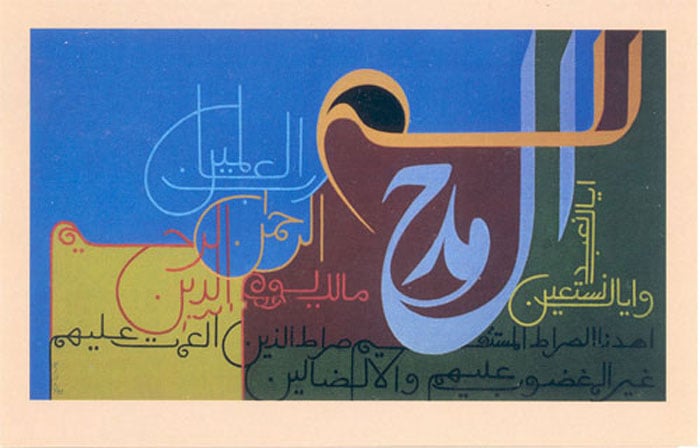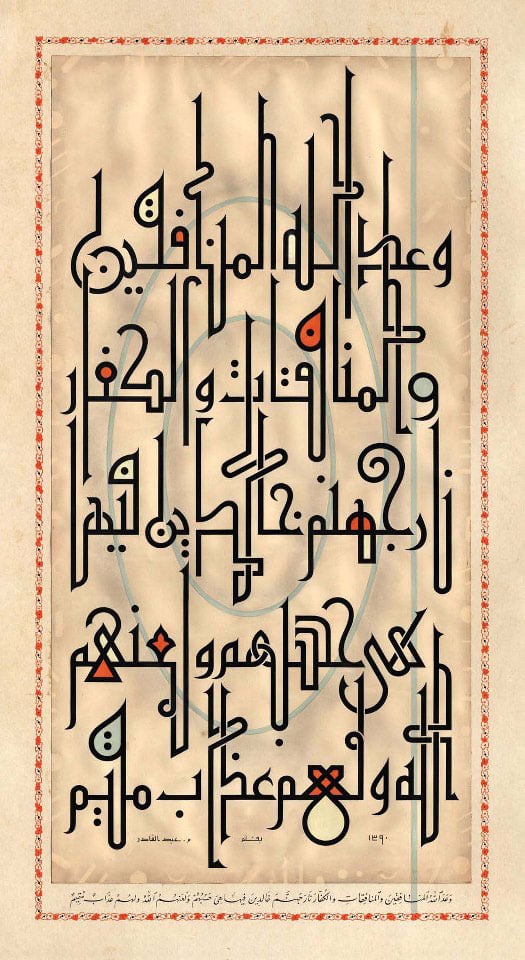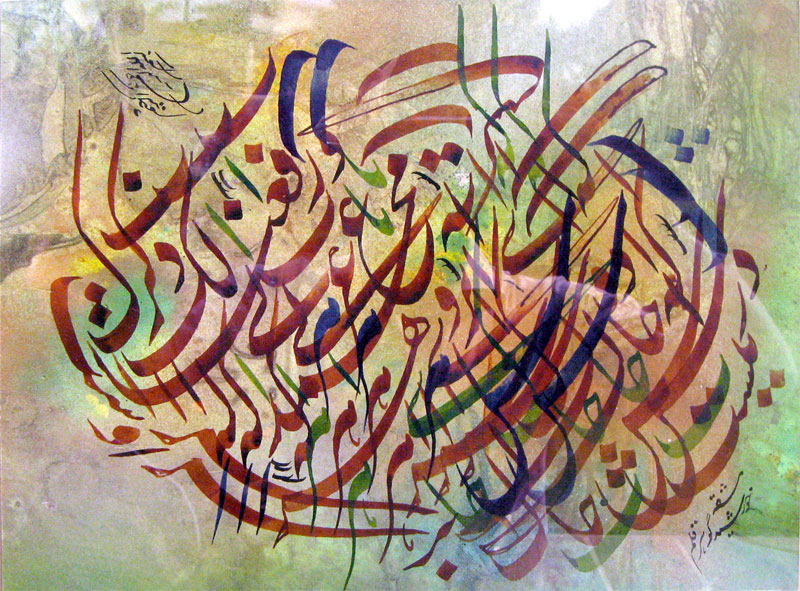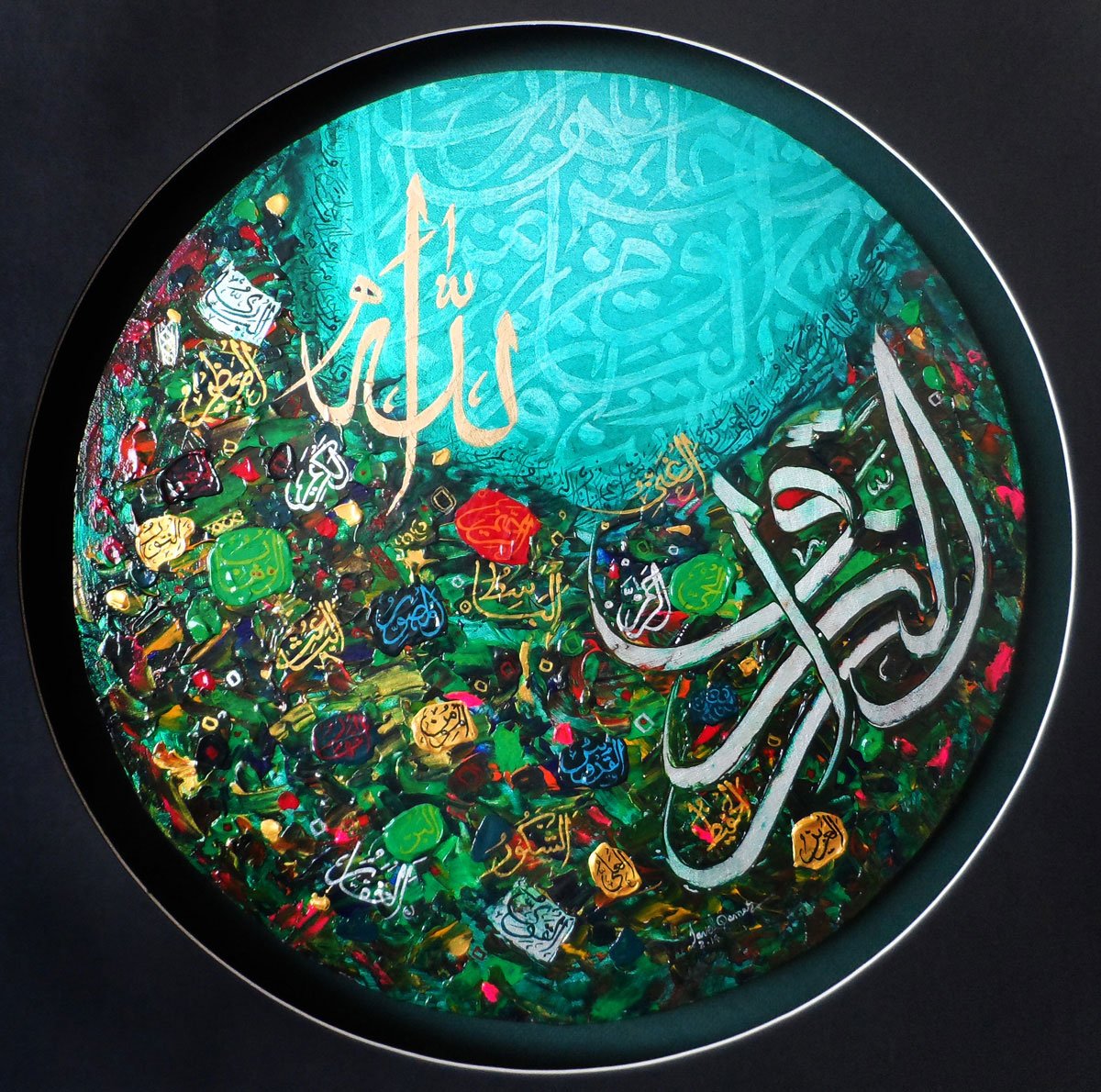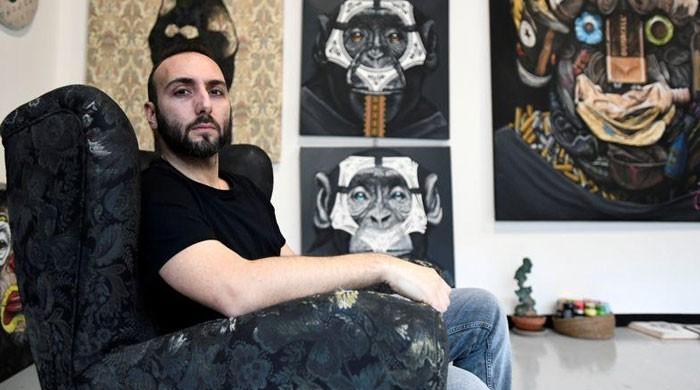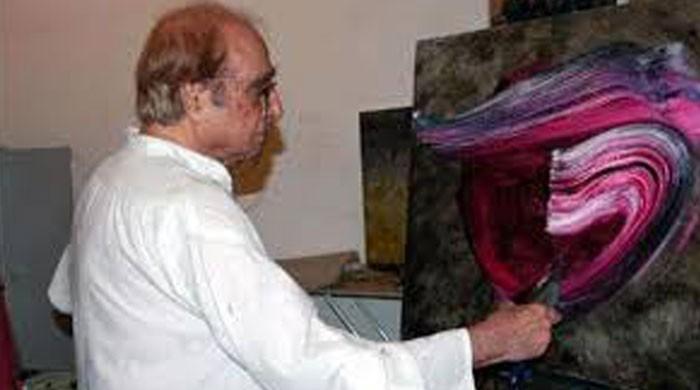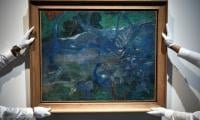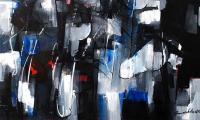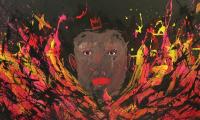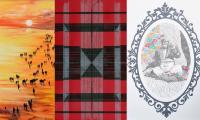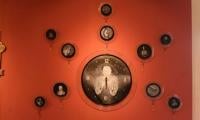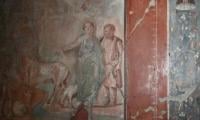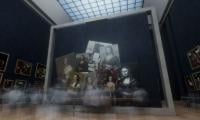Calligraphy is a centuries-old tradition of an artistic writing of different languages by using its alphabets in many different manners. Calligraphy is recognized by various scripts that have invented and gained popularity in that particular language. These calligraphic scripts can be seen in Holy Books and on historical buildings walls or carved on stones at architectural sites around the world. And for centuries people have preserved calligraphic traditions and passed them on to next generation making calligraphy styles a dominant feature throughout the globe.
New texts encouraged the creation and experimentations of using the popular script styles and thus professional engravers and calligraphers invented calligraphic art. They start using different colours to decorate their writing and enhance their skills in finding more ways to ornate this art.
It is the artist who chooses the design and execution of lettering with brush or pen and draws the letters in particular style called Khat or script. The aesthetic evolution of alphabets framed within the technical skills and material limitations of a person depending upon the style of writing the alphabets following a particular script results in an artistic and sensitive calligraphy.
Islamic calligraphy excelled due to the forms of Arabic letters, composed of dots, lines and curves. These attributes give the artist a freedom to create. The scripts are functional as well as artistic and graphic; therefore even those who do not understand the writing can enjoy the sight of it.
Calligraphy is associated with geometric Islamic art on the walls and ceilings of mosques as well as on the Holy Book pages. That’s why calligraphy for Muslims is a visible expression of the highest art of all, the art of the spiritual world.
Contemporary artists draw on the heritage of calligraphy to use calligraphic inscriptions or abstractions. Calligraphy continues to flourish in the forms of classical calligraphy and modern calligraphy. Modern calligraphy ranges from functional hand-lettered inscriptions and designs to fine-art pieces where the abstract expression of the handwritten mark may or may not compromise the legibility of the letters. Whereas in classical calligraphy a calligrapher writes characters that are disciplined yet fluid and spontaneous. And the history of calligraphy shows that beautiful and clear writings were always praised.
Classic or modern every calligraphic script had strict rules and shapes. Quality writing had a rhythm and regularity to the letters, with a geometrical order of the lines on the page. Each character had, and often still has, a precise stroke order.
Irregularity in the characters’ size, style and colours adds meaning to the Greek translation of calligraphy - “beautiful writing”. With many of the themes and variations of today’s contemporary calligraphy the content may be partially illegible, but is more meaningful to a viewer having love and respect for the work on view.
During centuries-long heyday calligraphy became increasingly decorative and ornate. Images of flowers and plants, geometric and mathematical designs were inserted and interwoven with the words of the Holy words.
Various types of artistic symbols and tokens, natural things or man-made objects, are explicitly use in the calligraphic works. The arcs and loops, ovals and circles, vertical and horizontal lines are used as designs. The basic geometrical forms remain the same in all works of artists. They choose the most appropriate form they like to use in their calligraphic paintings.
Although different artists use different techniques and styles this art has a strong aesthetic appeal. The works appear in various shapes, highlighted by Islamic motifs in bright colours such as red, orange, green, blue, ochre, cloudy white –all festive colours that are eye catching with the glitter of silver and gold leaf that enrich the artworks resulting in an artistic tradition of extraordinary beauty.
In the modern world Khat-e-Kufi, Khat-e-Tuluth, Khat-e-Nastaliq, Khat-e-Naskh, Khat-e-Diwani, Khat-e-Diwani Jali, Khat-e-Riqa and Khat-e-Reham are used by the calligraphers. But Khat-e-Suls, Khat-e-Naskh and Khat-e-Nastaliq are more famous among calligraphers.
Some of the finest calligraphers of our country include Abdul Majid Parveen Raqam, Tajuddin Zarrin Raqam, Sayed Shah Ghulam Mahmood Qadri, Mustajib Raqam, Hanif Ramay, Shakir Ali, Sadequain, Aftab Ahmed, Aslam Kamal, Bashir Moojid, Shafique Farooqi, Guljee and others.
One has to try to discover the mysterious beauty and elegance of the different decorative designs, skilfully used in presenting various scripts around the world in different objects and instances.
-
Rare Gauguin fetches 9.5 mn euros at Paris auction
-
Vibrant compositions
-
Artist Mashkoor Raza's bold and soft compositions
-
Sanki King brings a burst of energy in graffiti
-
Remembering the forgotten
-
‘Being Edhi’ – means to serve humanity
-
New technique reveals lost splendours of Herculaneum art
-
Louvre offers virtual ´tete-a-tete´ with the Mona Lisa
